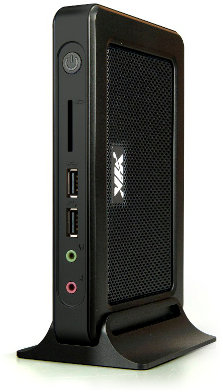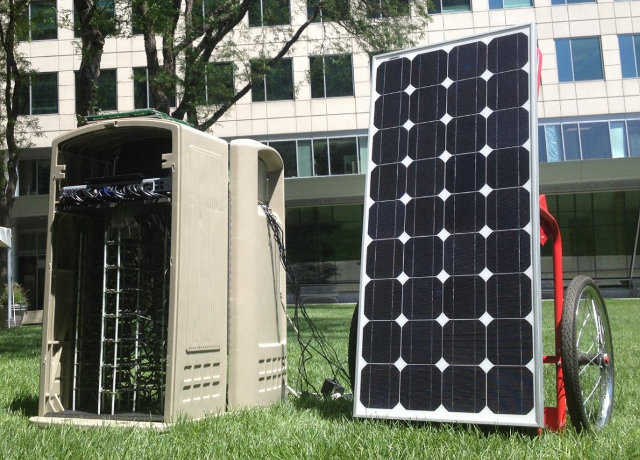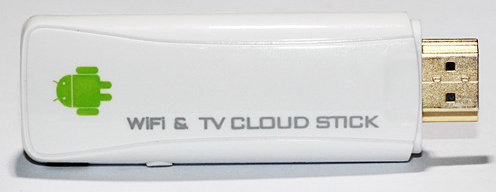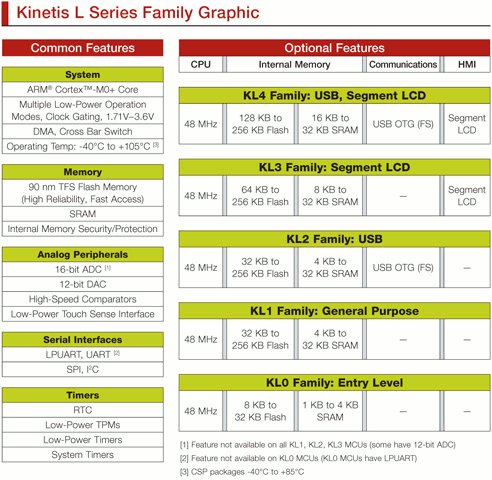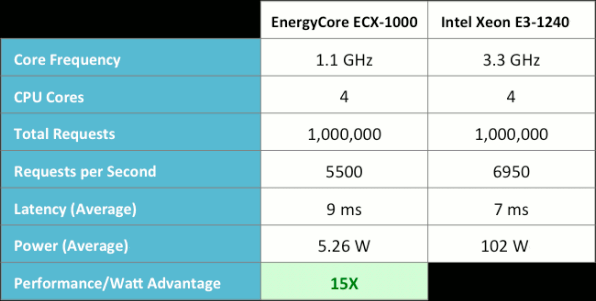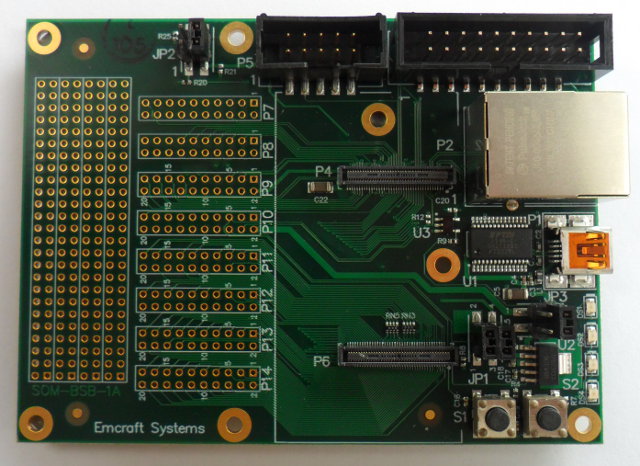VIA has unveiled its ARM Digital Signage (DS) system for cost sensitive high volume digital signage deployments. The system is based on an unnamed Cortex A9 processor (possibly Wondermedia WM8850?) with up to 2 GB RAM and 64 GB Flash. The company expects the device to be used in a wide range of applications such as kiosks, POS systems, video walls, menu boards to TVOIP, cloud streaming, and Out of Home Advertising. Here are the specs of this digital signage player: All in one system-ready to load software Designed for Android operating system Industry standard ARM Cortex A9 SoC Hardware acceleration of the most demanding video formats for resolutions up to 1080p DVI-D display port (HDMI Optional) 4x USB 2.0 ports 10/100 Ethernet port Audio-out/ Mic-in Up to 64GB NAND Flash Up to 2GB DDR3 SDRAM Dimension – 18 cm x 12 cm x 2.5 cm The VIA ARM DS […]
Phoronix Designed a Solar Powered ARM Cluster with 48 Pandaboards
Michael Larabel of Phoronix did a “little” week-end project at the Massachusetts Institute of Technology (MIT), building an ARM cluster with 48 Pandaboards mostly with standard Pandaboards (OMAP 4430), although some Pandaboard ES (OMAP 4460) were also thrown in the mix. The 96-core cluster consumes just over 200 Watts under load and can be powered by a solar panel. The boards are stacked up vertically in an industrial trashcan, and are powered via USB instead of AC adapters. Michael’s PandaBoard ES testing indicates about a 3 Watt idle per board, 5 Watt under load, or 6 Watts under extreme load. The cluster idle power consumption is just under 170 Watts while idle, and goes slightly over 200 Watts under load. Each Pandaboard runs Ubuntu 12.04 ARM OMAP4 installed on SD cards. MIT did some testing and provided Phoronix with benchmark results such as tests following Green500 benchmarking procedure, but they are […]
Group Buy – Get CX-01 Android 4.0 mini PC for 39.99 USD
togetho.ru is a an online community that organizes group buys for interesting gadgets, and one reader informed me they already did successful group buying for mobile devices such as Hyundai A7HD, SmartQ Ten3, and Freelander PD10 tablets and ThL V9 smartphone. They now opened group-buying subscription for CX-01 Android 4.0 mini PC powered by a dual core Cortex A5 processor (Telechips TCC8923) and plan to offer the device for $39.99 including international shipping via China Mail. It’s also possible to upgrade to Hong Kong Post or other shipping methods. You do not actually buy via togetho.ru, but you just need to register an email address, and if there is enough demand, they will be able to send a coupon to your email so that you can use it in Pandawill. The CX-01 HDMI stick should have performance similar to MK802 based on Antutu benchmarks for devices built around TCC8923, especially […]
Tizen Launches Development Unit Program for Developers
The Tizen development team showcased and gave away Tizen development hardware at the Tizen Conference in May, which are similar to the Samsung Galaxy S2. If you were not present, do not despair as Tizen has just announced the launch of a Development unit program in order to make it easier for qualified developers to find available development hardware running Tizen. The 30 units currently available are only useful for Tizen developers, since they do not contain all of the features that you would expect to see in a consumer device and are only intended to developers who are building applications for Tizen. If you are a developer willing to working on Tizen Apps, you can apply for this batch until June 29 at 11:59 pm PST by filling the application form (After logging-in which appears to be impossible right now). To be eligible, you can’t work for the handset […]
Freescale Announces Availability of Kinetis L Series Cortex M0+ MCU and Freedom Devkit
ARM unveiled its ultra-low power Cortex-M0+ core back in March, and Freescale and NXP also announced their plans to use this new core in some of their micro-controllers destined to power the internet of things. Yesterday at Freescale Technology Forum (FTF), Freescale announced the availability of alpha samples of its Kinetis L series. This new low power MCU family will allow existing 8-bit and 16-bit architecture to be replaced by 32-bit architecture without increasing power consumption, cost or size, and the company expects them to be used in devices such as small appliances, gaming accessories, portable medical systems, audio systems, smart meters, lighting and power control. The ARM Cortex-M0+ processor is said to consume about a third of the energy of any 8- or 16-bit processor, while delivering between two to 40 times more performance. Kinetis L series MCU can consume as low as 50 uA/MHz in very-low-power run (VLPR) […]
ARM vs x86 Servers Benchmark – Calxeda EnergyCore ECX-1000 vs Intel Xeon E3-1240
Calxeda has released the results of ApacheBench benchmark comparing their ARM-based EnergyCore solution to an Intel Xeon server in order to showcase the performance and the much lower power consumption of their servers. Here’s the setup: Hardware: Single Calxeda EnergyCore ECX-1000 @ 1.1 GHz, 4 GB of DDR3L-1066 memory, 1Gb Ethernet network port and 250 GB SATA 7200rpm HDD Intel Xeon E3-1240 @ 3.3 GHz, 16 GB memory and 1Gb Ethernet network port. No info on hard drive provided Software: Ubuntu Server v12.04 Apache Server v2.4.2 ApacheBench v2.3 (16k request size) They performed power measurements every 2 seconds and averaged the results. Power supply overhead and hard drive power consumption were not excluded in the measurement, but the entire SoC and DDR memory power consumption were included together. For the Intel server however, they could not measure directly, so they used published TDP values for the CPU (80 W) and I/O […]
Mele A1000/A2000 Android 4.0 Image Released
At last, a (semi-)official Android 4.0 release (and not a beta) for Mele A1000 and Mele A2000 media players has been released. This release is based on AllWinner Android 4.0 SDK. You can download homlet_4.0_v1.0_20120609_dd.img.lzma or here and dump it to the SD card with dd (Linux) and Win32DiskImager (Windows). It is also available via Bittorrent. There is also another image named homlet_4.0_v1.0_20120609.img.lzma that can be flashed via the Phoenix Utility, but the download link is not available anymore at the moment. Here are the instructions in Linux:
|
1 2 3 4 |
wget http://www.lundman.net/ftp/mele/homlet_4.0_v1.0_20120609_dd.img.lzma 7z x homlet_4.0_v1.0_20120609_dd.img.lzma sudo dd if=homlet_4.0_v1.0_20120609_dd.img of=/dev/sdX bs=1M sync |
Where you need to replace X in /dev/sdX by the correct letter for your SD card reader. Now insert the SD card in your Mele, and wait until the LED stops blinking, remove the SD card and restart the device. Et voila! The default language is Chinese, so you’ll have to go to the Settings to change the language to your […]
Getting Started with Emcraft Systems Cortex M3/M4 Starter Kits Running uCLinux
A few months ago, I wrote a post about running uCLinux on Cortex M3/M4. Since then I’ve had the opportunity to play a with Cortex M3 & M4 boards capable of running Linux, as last week, I received Emcraft Systems Freescale K70 Starter Kit together with their MicroSemi (previously known as Actel) Smartfusion SoM. Today, I’ll show some pictures of the baseboard and modules I received in the kit, and some details about the documentation and how to get started with the modules. Unboxing Pictures Here’s the baseboard with Ethernet, USB interface using USB-UART bridge connected to the UART0, JTAG connectors (P3 and P5), two push-buttons and a breadboard for easy access to unused signals (ADC, I2C, SPI, UART and GPIOs). P4 and P6 are the sockets to plug in the SoM. There is a lithium-ion battery (CR2016) at the back of the board for the RTC clock. As previously […]


